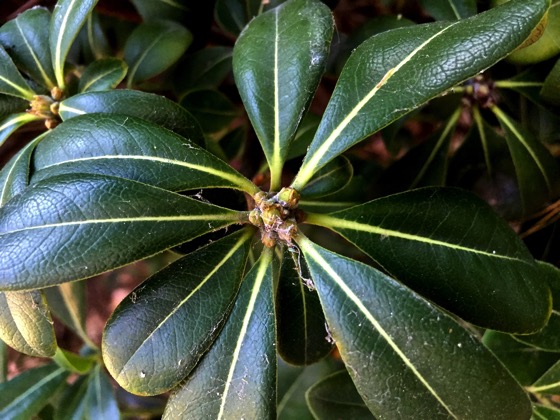In the natural world, flowers get all the attention and I have been guilty of perpetuating that bias here in my own blogs. That said, leaves are amazing, too, so in this series I will highlight the many forms of leaves available out there. — Douglas
Fittonia

Photo; Douglas E. Welch
Wow! I came across these fittonia at my local Armstrong Garden Center and was immediately captivated. Here is a plant where foliage is EVERYTHING. The dramatic geometric — almost fractal — design of the leaves grabs your eye immediately. This was being sold as a houseplant, but it makes me wonder if I might be able to grow it as a ground cover here in the garden. A true reminder of how fascinating leaves can be.
Fittonia (nerve plant) is a genus of flowering plants in the family Acanthaceae, native to tropical rainforest in South America, mainly Peru.[2]
The most commonly grown are F. albivenis and its cultivars. They are spreading evergreen perennials growing 10–15 cm (4–6 in) tall. They bear lush green leaves with accented veins of white to deep pink and have a short fuzz covering their stems. Small buds may appear after time where the stem splits into leaves. Flowers are small with a white to off-white colour. Plants are best kept in a moist area with mild sunlight and temperatures above 55 °F (13 °C), therefore in temperate areas they must be grown ashouseplants. Without water for a few days, this plant is known to “faint” but is easily revived with a quick watering and resumes its healthiness. Its spreading habit makes it ideal as ground cover. — Wikipedia
More information on Fittonia:
Previously in Garden Leaves:

